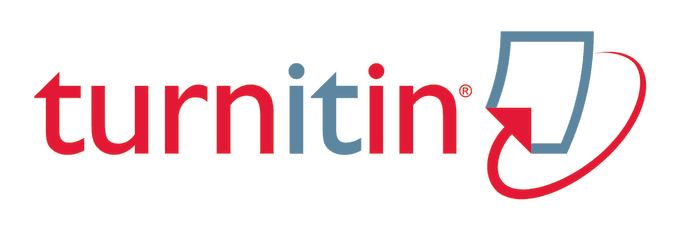Public Perception on The Implementation of Tax Amnesty Program
Keywords:
tax amnesty; public perception; tax awareness; tax complianceAbstract
Expecting fairness living, prosperous and welfare life are some expectations of the citizen. Tax revenue becomes the national backbone of the state budget to finance the state expenditures. Many obstacles can challenge the target of tax revenue collection. This critical point needs an awareness collectively from all elements of the nation to get survive with a shortfall nation budget. One of the tax solutions is tax amnesty program becomes a national agenda. Tax amnesty program is expected could reach the huge tax target in 2016. Therefore, tax amnesty will greatly assist the government efforts to improve economic conditions, develop massive infrastructures, enhance the health quality, reduce unemployment, reduce poverty, and improve inequality. Those objectives should be conducted by the well-managed communication plan to socialize the tax amnesty program. The socialization can be delivered by seminar, forum group discussion, online newspapers, social media, personal email, website, etc. The various communication channels have been implemented to deliver the message to the public effectively. Accordingly, the aim of the study is to explore the public perception of tax amnesty, to figure out the effectivity of tax amnesty implementation. Tax amnesty would be more effective to embrace the taxpayers through persuasive approaches. This approach is more desirable. Taxpayers are accompanied as partners to cultivate their tax awareness. This research assessed that many taxpayers have less known regarding the tax amnesty. Indeed, taxpayers need to understand more deeply to the Tax Amnesty Program. Thus, it would conduct tax compliance manner eventually.
References
Afrianto, D. (2017, January 31). Sektor Migas Tak Lagi Jadi Primadona bagi Keuangan Negara. Okezone Retrieved from https://economy.okezone.com/read/2017/01/31 /320/1605345/sektor-migas-tak-lagi-jadi-primadona-bagi-keuangan-negara
Allschwang, A. L. (2005). Come Into My Parlour, Said The Spider To The Fly! The 2003 Income Tax Amnesty: A Golden Opportunity or tax trap. Retrieved from http://base-search.net
Anggraeni, M. D. (2011). Pengaruh Pemanfaatan Fasilitas Perpajakan Sunset Policy Terhadap Tingkat Kepatuhan Pajak. Retrieved from http://base-search.net
Benno Togler, C. A. (2003). Is Forgiveness Divine? A Cross-Culture Comparison of Tax Amnesties. Retrieved from http://base-search.net
Creswell, J. W. (2009). Research Design. Thousand Oaks, California: Sage Publication, p.3.
Farrar, J., & Hausserman, C. (2016). The Influence of Guilt Cognitions on Taxpayers Voluntary Disclosures. Retrieved from http//base-search.net
Indonesia-Investment. (2017, March 27). Tax Amnesty Program Indonesia. Retrieved from Indonesia-Investment: https://www.indonesia-investments.com/id/finance/tax-system/tax-amnesty-program/item7124?
Istighfarin, N., & Fidiana. (2018, April 02). Tax Amnesty dari Perspektif Masyarakat Pajak. (S. Surabaya, Ed.) AKRUAL : Jurnal Akuntansi, 142. Retrieved from http://journal.unesa.ac.id/index.php/aj
James Alm, M. M. (1990). Amazing Grace: Tax Amnesties and Tax Compliance. National Tax Journal, 43 (No 1), pp.23-37. Retrieved from http//base-search.net
Jayasinghe, R. (2010). A Study on The Role of Tax Amnesties in Personal Income Tax Compliance in Sri Lanka . Retrieved from http://base-search.net
Koch, C. M. (2015). Anticipated Tax Amnesties and Tax Compliance: An Experimental Study. E15-V1.
Kemenkeu. (2016, December 29). Tax is National Backbone. Retrieved from Kemenkeu: https://www.kemenkeu.go.id/en/Berita/minister-finance-tax-national-backbone
Kemenkeu. (1990). Nota Keuangan dan RAPBN 1989/1990. Retrieved from kemenkeu.go.id: http://www.anggaran.depkeu.go.id/Content/Publikasi/NK%20APBN/NK%20RAPBN%201989-1990.pdf
L, J. M., & Ross, J. M. (2012). Fast Money? The Contribution of State Tax Amnesties to Public Revenue Systems. National Tax Journal, 529-562. Retrieved from http//base-search.net
Luitel, H. S., & Sobel, R. S. (2005). The Revenue Impact of Repeated Tax Amnesties.
Prasetyo, G. (2017). Sengketa atas Pelarangan Penerapan Tax Treaty dalam Kontrak Bagi Hasil antara Pemerintah Indonesia dan Kontraktor Asing dalam Industri Hulu Minyak dan Gas Bumi, dilihat dari Aspek Hukum Kontrak dan Hukum Perjanjian Internasional. Universitas Gajah Mada, Jakarta, Indonesia, p.4.
Saputra, R. (2015, March). Tax Amnesty bukan Alat Kompromi dengan Penjahat. Justice Forum. Retrieved from http//base-search.net
Shevlin TJ, T. J. (2016, October 26). An Examination of Firms' Responses to tax Forgiveness. Retrieved from http//base-search.net
Setiawan, P. A., Sinarwati, N. K., & Yuniarta, G. A. (2017). Tax Amnesty Implementation based on Tax Law No 11 Year 2016 at Tax Office Singaraja. e-Journal S1 Ak, 7. Retrieved from http//base-search-net
Suhendra. (2016, January 12). Target Pajak, Antara Ambisi dan Realisasi. Retrieved from Tirto: https://tirto.id/target-pajak-antara-ambisi-dan-realisasi-A
Torgler, B. (2003). Tax Morale: Theory and Empirical Analysis of Tax Compliance. Retrieved from http//base-search.net















